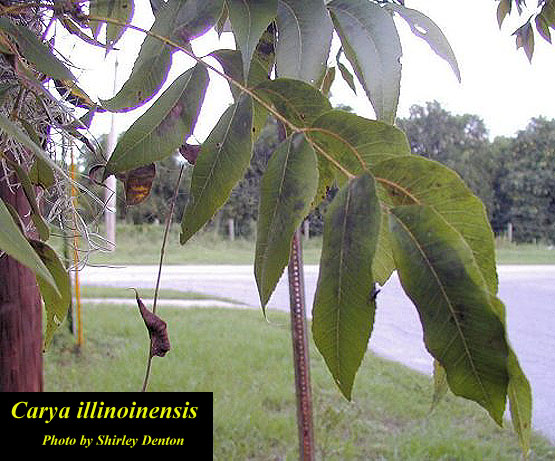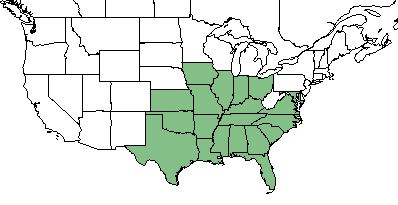Difference between revisions of "Carya illinoinensis"
(→Distribution) |
(→Cultivation and restoration) |
||
| Line 43: | Line 43: | ||
==Cultivation and restoration== | ==Cultivation and restoration== | ||
| + | ''C. illinoinensis'' is a highly cultivated plant due to its use by humans as food. <ref name= "Weakley 2015"/> | ||
| + | |||
==Photo Gallery== | ==Photo Gallery== | ||
<gallery widths=180px> | <gallery widths=180px> | ||
</gallery> | </gallery> | ||
==References and notes== | ==References and notes== | ||
Revision as of 16:38, 18 May 2018
| Carya illinoinensis | |
|---|---|

| |
| Photo by the Atlas of Florida Plants Database | |
| Scientific classification | |
| Kingdom: | Plantae |
| Division: | Magnoliophyta - Flowering plants |
| Class: | Magnoliopsida - Dicots |
| Order: | Juglandales |
| Family: | Juglandaceae |
| Genus: | Carya |
| Species: | C. illinoinensis |
| Binomial name | |
| Carya illinoinensis Wangen. | |

| |
| Natural range of Carya illinoinensis from USDA NRCS Plants Database. | |
Contents
Taxonomic Notes
Subspecies: Hicoria pecan (Marshall); Hicoria texana LeConte; Carya oliviformis (Michx. f.) Nutt.; Carya pecan (Marshall) Engl. & Graebn.
Varieties: none
Description
C. illinoinensis is a perennial tree of the Juglandaceae family native to North America. [1]
Distribution
C. illinoinensis can be found in the southeastern corner of the United States. [1] It was originally native to the south-central U.S., but is now more widespread into the southeastern region due to cultivation. [2]
Ecology
Habitat
C. illinoinensis is found in bottomlands, suburban woodlands, rural forest edges and floodplains, and is commonly cultivated around dwellings and in orchards. [2]
Conservation and Management
Cultivation and restoration
C. illinoinensis is a highly cultivated plant due to its use by humans as food. [2]